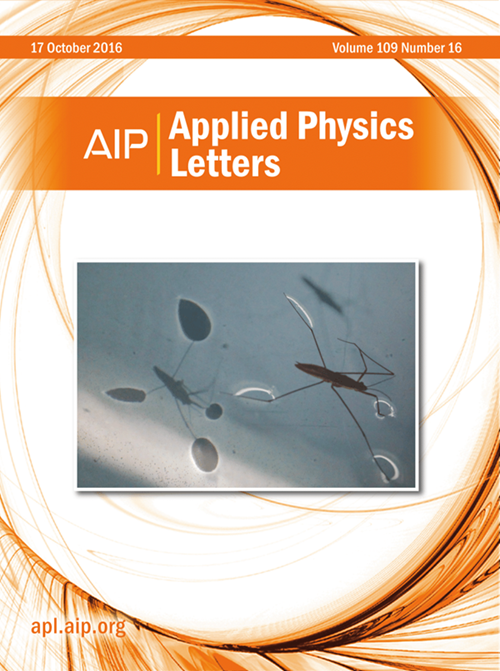(La, Nb)共掺杂TiO2/PEI微波吸收材料的温度依赖性缺陷偶极子极化
IF 3.6
2区 物理与天体物理
Q2 PHYSICS, APPLIED
引用次数: 0
摘要
通过有效平衡阻抗匹配和极化损耗,点缺陷工程已成为追求高效微波吸收(MA)的关键策略。然而,温度驱动的介电弛豫特性与吸收耗散机制之间的详细相互作用仍然是一个需要深入探讨的领域。在这里,通过在 TiO2 中共同掺杂供体离子(Nb5+)和受体离子(La3+),制备出了(La0.5Nb0.5)xTi1-xO2/聚醚酰亚胺(x = 0、0.25%、0.5% 和 1%)复合材料。随着点偶极子浓度的增加,增强的极化损耗显著放大了 MA 耗散,在 x = 0.5%时显示出高温应用的巨大潜力。值得注意的是,点偶极子极化模型能更全面地解释弛豫时间(τ)、活化能(Wη)和 T。这种行为归因于被这些缺陷簇抑制的短程电子运动导致的强烈极化损耗,这为进一步理解微波耗散机制和高温吸收潜力提供了理论基础。本文章由计算机程序翻译,如有差异,请以英文原文为准。
Temperature-dependent defect dipoles polarization of (La, Nb) co-doped TiO2/PEI microwave absorption materials
Point defect engineering has emerged as a key strategy to pursue efficient microwave absorption (MA) by effectively balancing impedance matching and polarization loss. Nevertheless, the detailed interplay between the temperature-driven dielectric relaxation characteristics and the absorption dissipation mechanisms remains an area that requires deeper exploration. Here, (La0.5Nb0.5)xTi1-xO2/polyetherimide (x = 0, 0.25%, 0.5%, and 1%) composites were prepared by co-doping TiO2 with donor (Nb5+) and acceptor (La3+) ions. As the concentration of point dipoles increases, the enhanced polarization loss significantly amplifies MA dissipation, demonstrating substantial potential for high-temperature applications at x = 0.5%. Notably, the point dipole polarization model provides a more comprehensive explanation of the relaxation time (τ), activation energy (Wη), and T. This behavior is attributed to strong polarization loss resulting from short-range electronic motion suppressed by those defect clusters, which provides a theoretical foundation for further understanding the mechanisms of microwave dissipation and high-temperature absorption potential.
求助全文
通过发布文献求助,成功后即可免费获取论文全文。
去求助
来源期刊

Applied Physics Letters
物理-物理:应用
CiteScore
6.40
自引率
10.00%
发文量
1821
审稿时长
1.6 months
期刊介绍:
Applied Physics Letters (APL) features concise, up-to-date reports on significant new findings in applied physics. Emphasizing rapid dissemination of key data and new physical insights, APL offers prompt publication of new experimental and theoretical papers reporting applications of physics phenomena to all branches of science, engineering, and modern technology.
In addition to regular articles, the journal also publishes invited Fast Track, Perspectives, and in-depth Editorials which report on cutting-edge areas in applied physics.
APL Perspectives are forward-looking invited letters which highlight recent developments or discoveries. Emphasis is placed on very recent developments, potentially disruptive technologies, open questions and possible solutions. They also include a mini-roadmap detailing where the community should direct efforts in order for the phenomena to be viable for application and the challenges associated with meeting that performance threshold. Perspectives are characterized by personal viewpoints and opinions of recognized experts in the field.
Fast Track articles are invited original research articles that report results that are particularly novel and important or provide a significant advancement in an emerging field. Because of the urgency and scientific importance of the work, the peer review process is accelerated. If, during the review process, it becomes apparent that the paper does not meet the Fast Track criterion, it is returned to a normal track.
 求助内容:
求助内容: 应助结果提醒方式:
应助结果提醒方式:


